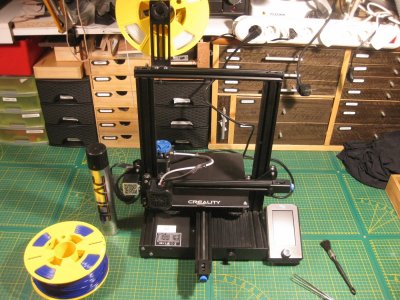- Joined
- Dec 14, 2021
- Messages
- 343
- Points
- 168

Have you thought about buying a CNC router instead? Something like the Genmitsu 3018. The end result would be similar and at least you then won't need fume extraction, though you might still want some kind of vacuum.
As I'm said in my other, laser-related, post this evening, laser cutting is really bad for smoke and fumes. Personally, I wouldn't do it without good outside ventilation. A couple of years ago I had my 3D printers running in my office instead of the workshop, as the office is warmer. I ended up in hospital with severe pneumonia and I think this was because of the fumes. Laser cutting is 10 times worse than 3D printing.
As I'm said in my other, laser-related, post this evening, laser cutting is really bad for smoke and fumes. Personally, I wouldn't do it without good outside ventilation. A couple of years ago I had my 3D printers running in my office instead of the workshop, as the office is warmer. I ended up in hospital with severe pneumonia and I think this was because of the fumes. Laser cutting is 10 times worse than 3D printing.





